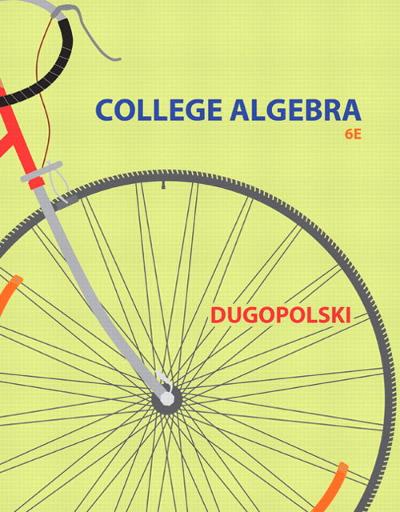Question
Psychologists investigated whether praising a child's intelligence, rather than praising his/her effort, tends to have negative consequences such as undermining their motivation (Mueller and Dweck,
Psychologists investigated whether praising a child's intelligence, rather than praising his/her effort, tends to have negative consequences such as undermining their motivation (Mueller and Dweck, 1998). Children participating in the study were given a set of problems to solve. After the first set of problems, half of the children were randomly assigned to be praised for their intelligence, while the other half was praised for their effort. The children were then given another set of problems to solve and later told how many they got right. They were then asked to wrhite a report about the problems for other children to read, including information about how many they got right. Some of the children misrepresented (i.e., lied about) how many they got right, as shown in the table below. Researchers were interested in learning whether there was a difference in the proportion of children who lied depending on how they were praised.
1. Identify the explanatory and response variables in this study.
2. For each group, determine the proportion who lied and identify them with appropriate symbols.
3. Describe how you could use index cards to conduct a simulation analysis for determining whether the difference between these proportions is statistically significant. Include the following information in your description:
a. How many cards you would use b. How many would be marked how c. How many you would deal out d. Which kinds of cards you would count e. What you would compare the results to after you conducted a large number of repetitions
4. Use the appropriate applet to conduct a simulation with 1,000 repetitions. Sketch the resulting histogram, labeling the axes appropriately, and report the p-value from the applet. 5. Provide a complete, detailed interpretation (in one or two sentences) of what this p-value means in this context (i.e., probability of what, assuming what?).
6. Summarize your conclusion about whether the data provide evidence that praising a child's intelligence leads to more negative consequences than praising his/her effort. Be sure to address the issue of causation as well as the issue of significance.
part B
Flexibility Data were gathered on 98 female college students and 81 male college students to see on average which sex was more flexible after participating in a physical wellness class and are available in the file FlexibilityPost. Sex Post_flexibility male 21.5 male 21.25 male 20 male 23.38 male 21 male 20.75 male 23.75 male 21.5 male 17.25 male 17.25 male 23.75 male 21 male 21.25 male 22.75 male 21.5 male 19.5 male 21 male 19.25 male 14.75 male 18 male 22.25 male 19.25 male 16.75 male 20 male 21.5 male 24 male 18 male 16.5 male 16.5 male 16.25 male 22.5 male 23 male 19.75 male 19.88 male 24 male 23 male 21 male 21.5 male 18.25 male 16 male 19.5 male 24.5 male 20.75 male 15 male 24.5 male 19.5 male 21.5 male 14.25 male 22 male 23 male 21.5 male 25.13 male 15 male 19.75 male 20 male 24 male 16 male 25.25 male 20 male 20.5 male 18.5 male 21 male 20.75 male 20 male 15.5 male 21 male 21.75 male 17.25 male 19.25 male 17.5 male 19.5 male 23.38 male 19 male 22 male 18.25 male 21.25 male 19.25 male 17 male 18.75 male 17 male 21.25 female 21.25 female 24 female 25.25 female 17.38 female 21.38 female 21.25 female 21.63 female 19.38 female 19.63 female 19.13 female 23.75 female 21 female 21.25 female 21 female 21.25 female 23.5 female 12.75 female 20.75 female 22.75 female 20.75 female 20.75 female 20 female 23 female 22.5 female 23 female 23.25 female 21.75 female 17 female 19 female 24.5 female 22 female 23 female 24 female 21.5 female 21 female 24 female 27 female 22.5 female 21.5 female 22.5 female 22 female 21.5 female 21 female 21.75 female 25.5 female 18.25 female 22 female 19.25 female 22.5 female 20.75 female 21.5 female 21.25 female 21.75 female 21 female 18.25 female 20.25 female 19.75 female 21.5 female 21.25 female 18 female 21 female 21.63 female 22.63 female 23.5 female 16.5 female 23.5 female 19.5 female 23 female 20 female 22.75 female 22.5 female 22.5 female 23.5 female 32.5 female 23.38 female 20.25 female 22 female 21.5 female 23.5 female 23 female 21.75 female 14.75 female 22 female 19 female 19.5 female 18.5 female 22.5 female 13 female 21.5 female 20.5 female 22.75 female 19.5 female 23.5 female 24 female 24.38 female 23.5 female 23.25 female 22.5
a. State the research question.
b. How is the study designed: observational study or randomized experiment?
c. State the hypotheses.
d. Check validity conditions. Can you use the theory-based approach or should you use randomization methods?
e. Regardless of your answer to part (d) use a simulation analysis to generate a p-value and 95% CI.
f. Regardless of your answer to part (d) use a theory-based approach to generate a p-value and 95% CI.
g. Based on your answer to part (d) compare the p-values and 95% CIs received in parts (e) and (f).
h. Is zero in the confidence intervals? How does that fit with inference based on the p-values?
part C
How has honor killing affected the world and what can we do to stop it?
Step by Step Solution
There are 3 Steps involved in it
Step: 1

Get Instant Access to Expert-Tailored Solutions
See step-by-step solutions with expert insights and AI powered tools for academic success
Step: 2

Step: 3

Ace Your Homework with AI
Get the answers you need in no time with our AI-driven, step-by-step assistance
Get Started


